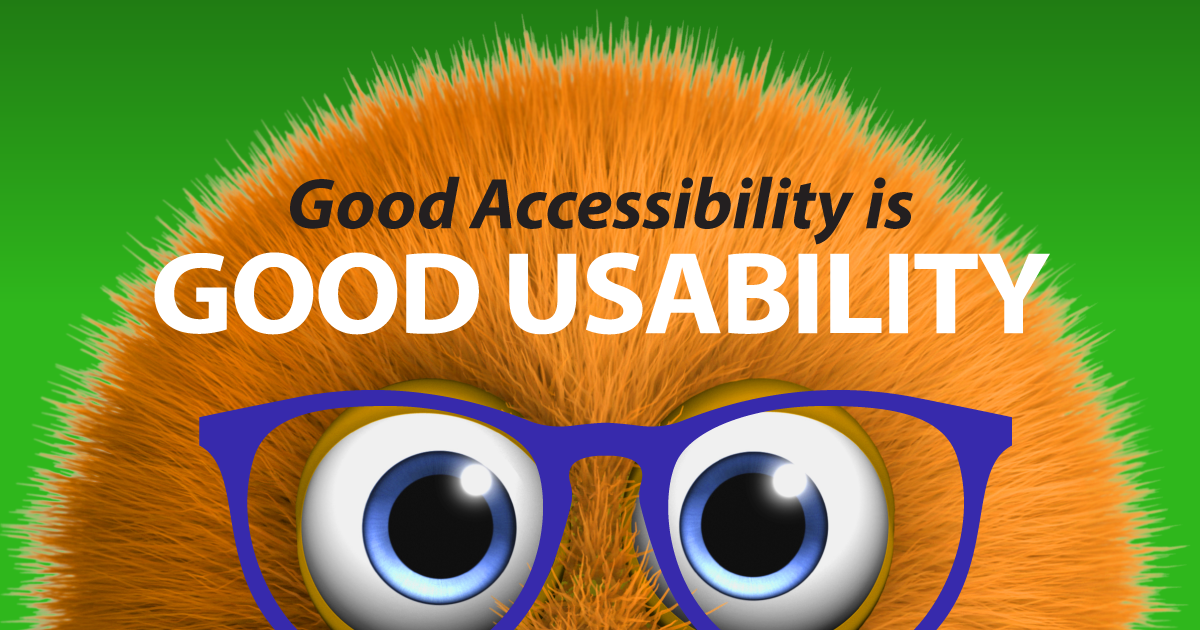
Fixing the Top Five Accessibility Mistakes on Social Media
Sure, your website has great Accessibility, and you check up on it regularly to keep your site up to snuff. But what about the rest of your online presence?
The bad news is, a lot of credit unions aren’t paying attention to Accessibility on Social Media, and routinely post content that a significant portion of their members can’t access.
The good news is, most social media platforms and apps have fairly good Accessibility features built in. Maintaining good Accessibility isn’t that hard once you make it a habit.
Good Accessibility is good usability, and benefits everyone, sometimes in surprising ways. For example, did you know that the majority of mobile users watch video with the sound turned off?
Here are the top five social media Accessibility mistakes credit unions make – and how to fix them.
#1: Text in images
If I had to pick one, this is the biggest. An image in a Facebook or Instagram post is not a postcard or brochure, so you really need to remove or at least minimize the text in the images you post.
A few words, maybe five or fewer, will usually get picked up OK by the automated ALT text generators (but you should always still check… see mistake #2). But more than that will usually end up garbled.
Even if there are only a few words in a headline in the image, make sure these are also repeated in the text of the post. Otherwise, people who don’t see the images may be somewhat mystified as to what the post is about.
And please… no disclosures in social media images. They just turn into fuzz anyway. Put the fine print on the landing page on your website, and re-write the social media post so it’s not needed.
#2: Settling for automated ALT text
The Accessibility standard for image and video content is “same benefit”; in other words, people who don’t see an image, or see or hear a video, should ideally get the same information via the ALT text or closed captioning. Obviously, this isn’t always 100% practical – sometimes there’s simply no substitute for seeing something – but you should do the best you can.
Fortunately, most social media platforms try to help you out; they have AI bots that look at images and try to generate ALT text.
Sometimes the automated ALT text works great – “dog wearing sunglasses” was surprisingly accurate. But most of the time the results are mediocre, and need some sprucing up: “May be a picture of four people under a tree” isn’t helpful or interesting.
In addition, the bots often get distracted by t-shirts, logos, or signs in photos, and you get very garbled results.
That’s why it’s very important to always take a few seconds when you post an image, and check and correct the automated ALT text.
#3: Settling for automated video captioning
The same principles apply to video on social media. YouTube, Facebook, etc. have speech recognition bots that try to listen to any spoken narration and dialogue in videos, and generate a transcript.
These can do a pretty good job, honestly. But they’re never 100% accurate, and you should always, always, always check and correct the generated transcript.
Even better, when you make a video, build in the correct closed captioning from the start. Any of the major video editors can do this, and the video players on YouTube, Facebook, etc. will pick up and use this closed captioning instead of trying to guess.
#4 No descriptions of text and action in video
Remember that “same benefit” standard? Most videos aren’t just a voiceover, and so there’s often important text, and of course the action and sounds often carry a lot of meaning. And if there’s no spoken voiceover, the automated closed captioning won’t pick up anything – all you get is something like [Music].
Make sure you reproduce any important text in closed captioning, and give a reasonable description of important action. You don’t have to describe every little thing that happens, of course; just focus on descriptions that are necessary to the overall meaning, or “benefit” of the video.
#5 Not accounting for cropping and optimization
Facebook, Instagram, YouTube, etc. resize, crop, and compress images and video. If you have much text in the image, or small, important details, even readers with 20/20 vision won’t be able to tell what those fuzzy or missing blobs are trying to say.
And of course, image and video quality can vary a lot depending on the user’s device, connection speed, and compression.
The best advice is to keep images and video as clear and simple as possible, and avoid text. Bear in mind that anything you post might show up in the mobile app about the same size as a postage stamp, cropped into a square or rectangle, on an old phone with a sketchy signal. Make sure the important stuff is in the center of the image, and it’s understandable even if it’s tiny and fuzzy.
It’s worth paying more attention to social media Accessibility
Take care of these five mistakes, and you’ll be well on the way to a more effective social media presence that works better for everyone and includes all your members!
Need a hand with Social Media or website content or Accessibility? Get in touch!
- CU Numbers Need Marketing Love, Too - April 2, 2024
- Will it blend? The only CU fintech question that matters. - February 13, 2024
- Solving the CU marketing “now what?” problem - January 16, 2024
